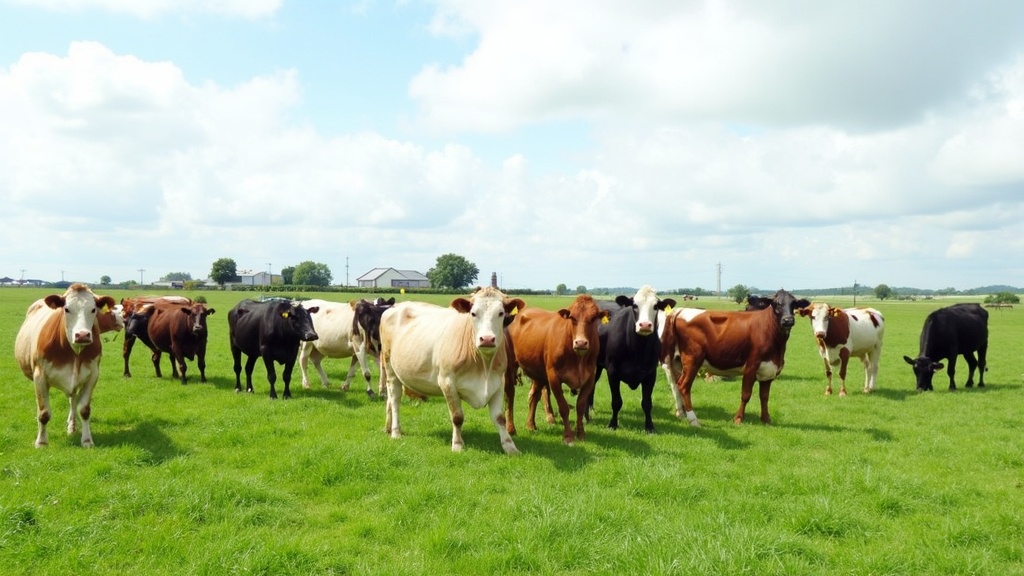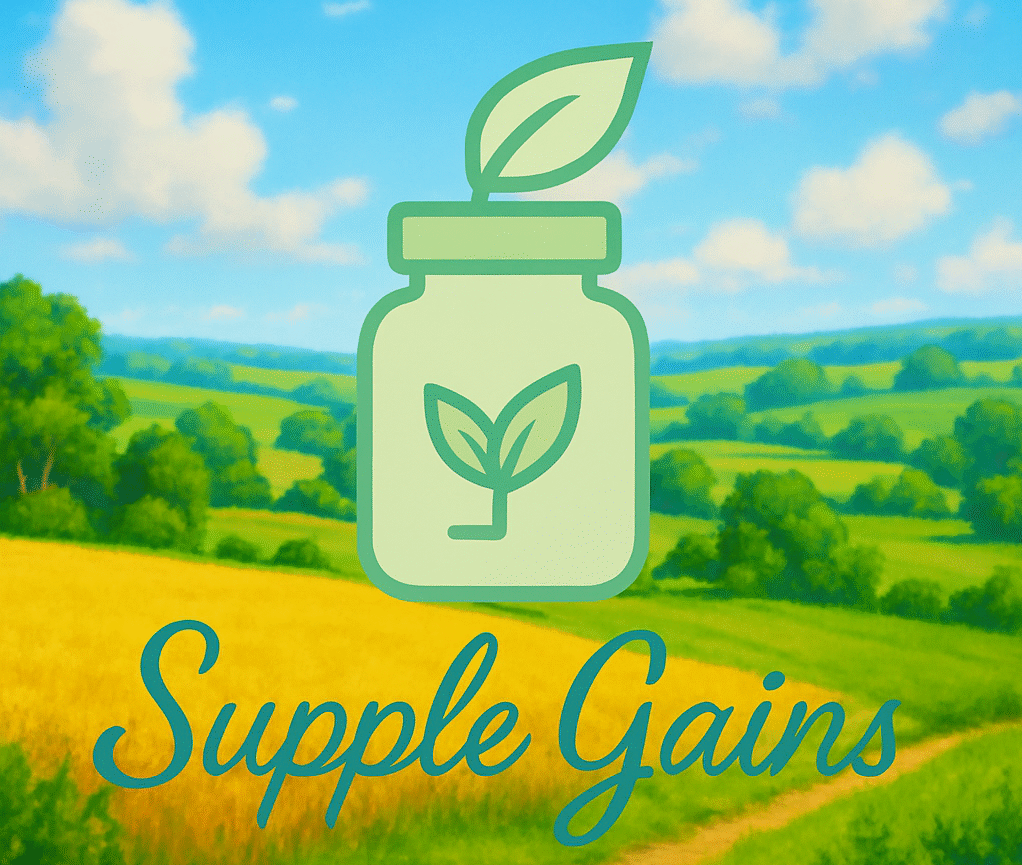Animal agriculture connects with climate change in more ways than most people realize.
If you’ve ever wondered why activists talk about cows and methane or why eating less meat gets tied to climate solutions, you’re not alone.
There’s actually a lot to this discussion.
I’m breaking down the core links between raising animals for food and the planet’s changing climate so everyone can get a clearer picture of what’s happening, why it matters, and what can actually make a difference.

How Animal Agriculture Contributes to Greenhouse Gases
Animal agriculture pumps several types of greenhouse gases into the atmosphere.
The main ones are methane (CH4), nitrous oxide (N2O), and carbon dioxide (CO2).
Each gas affects the planet’s heat balance in its own way, but overall, raising animals for food is a pretty big source of emissions.
Methane grabs a lot of attention.
Livestock like cows and sheep release methane from their digestive systems, a process called enteric fermentation.
It sounds technical, but it just means natural burping and gas as the animals break down their food.
Methane is way more powerful at trapping heat than carbon dioxide.
Over a couple of decades, it’s about 80 times more potent, even if it doesn’t stick around as long.
Nitrous oxide comes from manure and fertilizer used to grow the animals’ feed.
This gas stays in the atmosphere for over 100 years and is about 265 times stronger at heating the planet than carbon dioxide.
Cows, pigs, and chickens contribute to this by producing tons of manure, which releases both methane and nitrous oxide as it breaks down.
According to UN reports, livestock account for roughly 14–16% of global greenhouse gas emissions.
That’s more than every car, truck, ship, and airplane on earth combined, which is pretty wild when you think about it.
The Role of Land Use and Deforestation
Animal agriculture uses a lot of land, far more than vegetable or grain crops for direct human consumption.
Most of this space is for grazing animals or growing huge amounts of feed crops like soy and corn.
Clearing forests to make new pastures or farmland is a top reason for disappearing jungles, especially in places like the Amazon.
When forests are cut down, two things happen that tie back to climate change.
First, trees vanish, and with them goes their ability to soak up carbon dioxide.
Second, the actual process of clearing, whether by burning or bulldozing, releases huge amounts of stored carbon back into the air.
Land that might have once helped cool the planet turns into a new source of warming gases.
According to a recent study in Nature Sustainability, beef production is the leading driver behind cutting down tropical forests.
The same goes for crop fields supporting animal feed, making animal products a key part of the deforestation conversation.
Water, Feed, and Resource Use
Raising animals for meat, milk, and eggs doesn’t just use up land.
It also takes a ton of resources like water and grains.
Cows, for example, need large amounts of water for drinking and massive fields full of food just to grow to market size.
According to Water Footprint Network data, it can take over 1,800 gallons of water to produce a single pound of beef.
Chicken and pork need less, but they’re still way above most plantbased proteins.
Some of the water gets used directly, but most goes toward irrigating crops that feed the animals.
When feed production relies on loads of fertilizer, it also ties right back into those nitrous oxide emissions.
Plus, with animal operations producing tons of manure, water pollution from farm runoff becomes a big local issue, especially near largescale industrial farms.
Why Methane and Nitrous Oxide Matter So Much
Not all greenhouse gases act the same.
I like to remind folks that methane and nitrous oxide are powerful in ways that aren’t obvious at first glance.
A lot of climate talk focuses on carbon dioxide because it’s the most common, but methane and nitrous oxide have outsized impacts.
Methane, mostly from livestock, can heat the planet really quickly over shorter periods.
Cutting methane emissions is considered one of the quickest ways to slow global warming.
That’s why efforts to change what cows eat, like adding certain plants or supplements, are getting so much research attention.
Nitrous oxide mostly comes from spreading manure and fertilizers.
It’s not just powerful at heating the planet.
It also damages the ozone layer, the shield that protects us from harmful ultraviolet radiation.
Challenges in Reducing Animal Agriculture’s Climate Impact
Scaling down the climate impact of animal farming is tough.
One challenge is the huge size of the industry.
Billions of people across the world rely on livestock for food, jobs, and culture.
It’s not a simple switch for another protein source overnight.
Another tricky issue is that livestock emissions are pretty scattered.
Unlike a power plant or factory, emissions come from millions of small, moving sources.
This random spread makes monitoring and cutting emissions from animal farming harder than from many other sectors.
Some producers are working on solutions.
These include better manure management, feed additives that cut methane, or grazing systems that capture more carbon in the soil.
There are some promising techniques, but these changes can take investment and time to really take hold on a broad scale.
Global Meat Consumption Trends
Meat consumption is rising in many parts of the world, especially in countries where incomes are growing.
More demand often means more land converted for pastures and feed crops, resulting in greater emissions from larger herds and flocks.
That’s why experts say diet choices and smart policy play a role too; even small reductions in meateating by many people can add up to big savings for the climate.
Sustainable Farms and New Directions
There are farms trying out more sustainable ways to raise animals, like rotational grazing, which lets grasslands recover and store carbon, or using methane digesters to trap gas from manure for energy instead of letting it escape.
These practices are worth checking out, and while not always perfect, they can cut emissions when handled well.
Ways Individuals and Communities Can Help
You don’t have to run a farm to make a difference.
One of the biggest ways ordinary folks can help is by choosing what they eat carefully.
Swapping even some meals from meat to plantbased foods can save a lot of carbon, especially if it means eating less beef and lamb, since those produce the biggest emissions per pound.
- Try More PlantBased Meals: Eating more beans, grains, nuts, and veggies cuts your personal climate footprint a lot.
- Reduce Food Waste: Not throwing away food, whether animal or plant, also saves the resources used to grow it.
- Support Sustainable Producers: Look for dairy, meat, or egg farms using more climatefriendly practices. Certifications like organic or pastureraized don’t guarantee zero emissions, but can be a step in the right direction.
Communities can push for local changes as well, such as supporting policies that make school lunches greener or encouraging urban gardening.
Every bit helps, and the conversation is definitely growing around ways regular people can help move the food system in a better direction.
Local markets and small businesses may also offer options that support less resourceintensive animal products.
Education and outreach remain crucial.
When more people understand the impacts of animal agriculture, they’re better equipped to make informed choices and to push companies and governments for stronger policies.
Sharing knowledge within communities can bring positive change faster than most folks expect.
Frequently Asked Questions
These topics come up pretty often when talk turns to animal agriculture and the climate.
Question: Is eating chicken better for the climate than eating beef?
Answer:
Yes, raising chickens generally uses less land and water and produces much less methane than raising cows.
Swapping beef for chicken reduces your climate impact, but swapping either for plant proteins cuts it even more.
Question: Why does livestock get so much blame for climate change when other industries pollute more?
Answer:
Energy and transport do make up the biggest share of emissions overall, but livestock is a leading source of methane and nitrous oxide, which are really powerful greenhouse gases.
It’s a big enough piece of the puzzle that experts say action in agriculture is needed, along with fixes in energy, transport, and industry.
Question: Are there real ways for farms to cut their emissions now?
Answer:
Yes, some options include switching up animal diets, better manure handling, rotational grazing, and using methane digesters.
It takes investment and education, but there are working examples around the world already.
Final Thoughts
Animal agriculture’s link to climate change runs deep, from greenhouse gases and land use to water and more.
Choices in the grocery store, as well as policy and farm changes, can all play a role.
While the topic can seem daunting, every move forward, like eating more plant foods or supporting better farm practices, adds up.
There’s lots to learn and discuss, so it’s worth staying curious and keeping the conversation open as the world figures out the path to a cooler planet.
